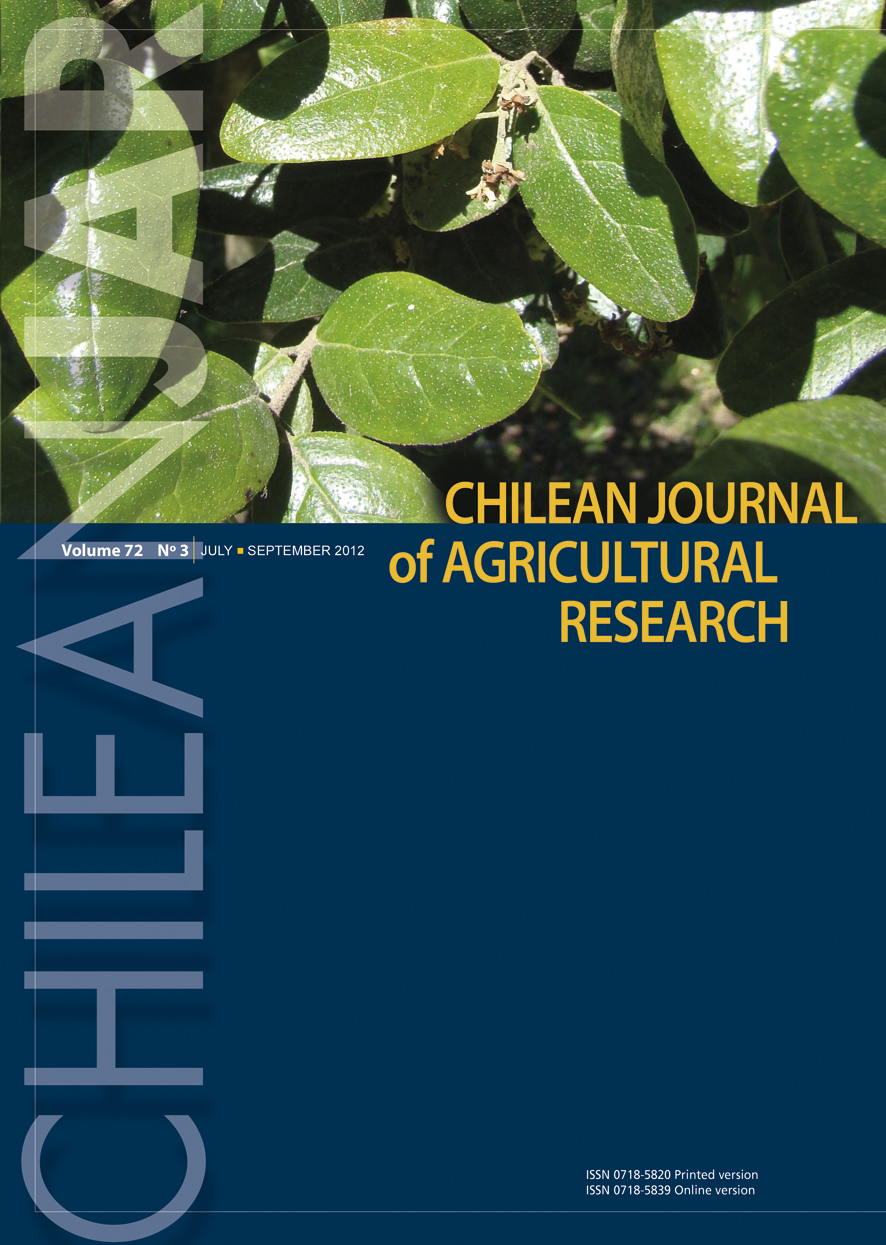
|
Chilean Journal of Agricultural Research
Instituto de Investigaciones Agropecuarias, INIA
ISSN: 0718-5820
EISSN: 0718-5820
Vol. 70, No. 4, 2010, pp. 616-625
|
 Bioline Code: cj10069
Bioline Code: cj10069
Full paper language: English
Document type: Research Article
Document available free of charge
|
|
|
Chilean Journal of Agricultural Research, Vol. 70, No. 4, 2010, pp. 616-625
| en |
Modeling Isosteric Heat of Soya Bean for Desorption Energy Estimation Using Neural Network Approach
Chayjan, Reza Amiri & Esna-Ashari, Mahmood
Abstract
Sorption isotherm of soya bean (Glycine max (L.) Merr.) was obtained by the dynamic experimental method. Artificial Neural Networks (ANNs) were used for modeling soya bean equilibrium moisture content (EMC). Thermodynamic equations and trained ANN for prediction of two thermodynamic properties of net isosteric heat and entropy of soya bean were utilized. The ANN models were better compared with mathematical models. In this study, the isosteric heat and entropy of sorption of soya bean were separately predicted by two power models as a EMC function. Predictive power of the models was high (R2 ≈ 0.99). At the moisture content above 11% (dry basis, db), isosteric heat and entropy of sorption of soya bean were smoothly decreased, while they were highest at moisture content about 8% (db). Isosteric heat and entropy would be useful in the storage simulation of dried soya bean. The ANN model predicts soya bean EMC more accurately than mathematical models. Hence, better equations could be developed for the prediction of heat of sorption and entropy based on data from the ANN model.
Keywords
Back propagation, entropy, isosteric heat, sorption isotherm, soya bean.
|
| |
| es |
Modelación de Calor Isostérico de Soya para Estimación de Energía de Desorción usando Red neural.
Chayjan, Reza Amiri & Esna-Ashari, Mahmood
Resumen
La isoterma de desorción de soya (Glycine max (L.) Merr.) se obtuvo por el método experimental dinámico. Se usaron redes neuronales artificiales (ANN) para modelación del contenido de humedad de equilibrio (EMC) de soya. Se utilizaron ecuaciones termodinámicas y ANN dirigidas para predicción de dos propiedades termodinámicas, calor isostérico neto y entropía de soya. Los modelos ANN fueron mejores comparados con modelos matemáticos. En este estudio, el calor isostérico y entropía de absorción de soya fueron predichas separadamente por dos modelos de poder como una función de EMC. El poder predictivo de los modelos fue alto (R2 ≈ 0.99). A un contenido de humedad superior a 11% (db), el calor isostérico y entropía de absorción de soya fueron ligeramente reducidos, y fueron las más altas a un contenido de 8% (db). El calor isostérico y entropía podrían ser útiles en la simulación del almacenamiento de soya deshidratada. El modelo ANN predice EMC de soya más confiablemente que los modelos matemáticos. Por lo tanto, podrían desarrollarse mejores ecuaciones para la predicción del calor de absorción y entropía basada en datos del modelo ANN.
Palabras-clave
propagación de vuelta, entropía, calor isostérico, isoterma de absorción, soya.
|
| |
© Copyright 2010 Chilean Journal of Agricultural Research.
Alternative site location: http://www.inia.cl
|
|
